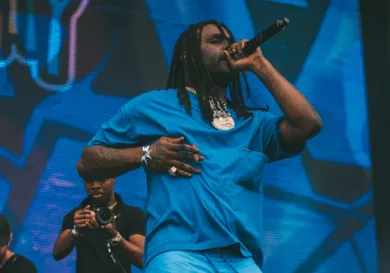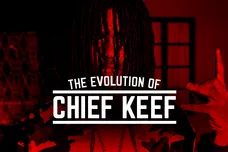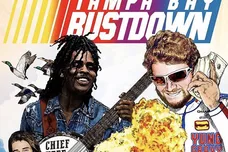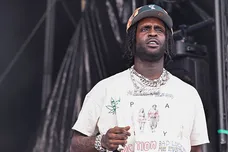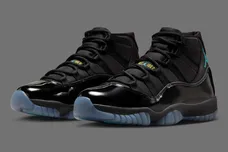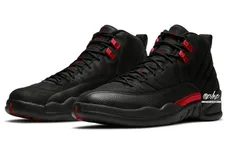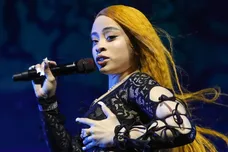Over the past decade, nobody was more unlikely a force to reckon with than Keith Cozart, the street rap prodigy better known as Chief Keef. Initially coming to recognition as a member of Chicago’s “drill” phenomenon alongside rappers like King L and Lil Durk, it didn’t take long for Keef to become the main figurehead of the movement. Since then, he’s defied the rules of the rap game time and time again, all while somehow managing to emerge even more successful than before.
Not only is he a musical influence for artists like Lil Uzi Vert, Lil Pump and Tay-K, but the nature of his career and the controversy surrounding him has been a blueprint we've seen duplicated again and again. For those unfamiliar, uncertain or downright uninitiated, we’ve provided you a play-by-play in the evolution of Chief Keef, to demonstrate how far he’s come - not by following expected standards, but by setting them.
(2009) Baby Sosa: "What Up"
At 13, we might’ve been saving up our allowances, playing video games, practicing basketball or whatever middle school kids do. In 2009, Chief Keef was barely in his teens and already starting to rap with a surprising level of competency. Listening to early records like “What Up” is a curious thing, as few of Keef’s standout characteristics are present.
Sloppy, with a high-pitched nasal voice that makes him sound like the missing Clipse brother, you can hear the vague influences of maybe a Wayne or a Jeezy. Yet it’s clear from these early, admittedly sloppy examples that the Chief Keef who would soon become a star definitely needed a little more grinding before evolving.
(2010) Futuristic Sosa: "Show Out (ft. T-Slick)"
After Keef broke out in the mainstream, the obvious templates of Gucci Mane, Young Jeezy and Waka Flocka Flame were thrown around by critics. In Chicago, closer parallels were drawn to drill icons like King L (then going by King Louie) and Lil Durk, already burgeoning local stars before Keef’s ascendence. However, less discussed is the influence of rappers like Roscoe Dash, Travis Porter or the Rich Kidz coming out of Atlanta pushing the swag or “futuristic” rap style.
Though Keef’s more aggressive material might’ve been what made him a star, you could always hear his penchant for singalong hooks and peppy melodies. By 2010, Keef had already met collaborator DJ Kenn, and was putting out mixtape material with surprising regularity. However, it’d be the next year in which Keef’s career truly began to blossom.
(2011) Drill Sosa: "Bang"
In many ways, “Bang” remains the quintessential selection of the “Drill Sosa” era. From the trademark staccato adlibs, Keef’s gravelly droning voice, the violent bars, Kenn’s endless surging vamp of menacing strings and erratic drums, and the equally chaotic DGainz video. In merely a few years, Keef had begun to find his stylistic voice, all while developing his skills into a potent rapper; unfortunately, he had also become a lightning rod for trouble, landing himself on house arrest for various legal issues.
And to think, Keef was still well beyond achieving his greatest heights both commercially and critically rapper, yet was already garnering national interest from established artists like Lil B and Waka Flocka already expressing eagerness to collaborate.
(2012) Classic Sosa: "Don't Like (ft. Lil Reese)"
A record so powerful even those who weren’t rapping (RIP Fredo Santana) became stars overnight. It would be insincere to argue any other single from 2012 mixtape Back From The Dead mixtape could ever compare to the heights o f“Don’t Like.” By this point, Keef had switched up from the lean, driving sounds of DJ Kenn to the bombastic and muscular sounds of childhood friend turned beatmaker Young Chop. With drums that rattle speakers and off-key apocalyptic horns, there’s little one can do but stop and take notice.
Combine that with Keef’s obnoxious enthusiasm and a particularly focused verse by friend and GBE associate Lil Reese, it’s only natural that this smash hit would widen the scope of Keef’s reach. Kanye West included a remix on G.O.O.D Music’s Cruel Summer compilation. During a Chicago show, Drake brought Keef out as a special guest to a rapturous crowd response.
Later that year, Keef’s debut album Finally Rich would be released on Interscope, managing to go platinum despite Keef being jailed for parole violations. Somehow, almost in spite of Sosa’s difficulties, his impact and successes remained undeniable.
(2013) Rogue Sosa: "Fuck Me"
After returning home from imprisonment to newfound success, Chief Keef’s next move was to essentially go into hiding. Though arguably at his peak, Keef started a relentless outpouring of singles straight to Youtube or iTunes, many of which diverged in style and quality. While some like “Macaroni Time” or “Now It’s Over” were meant to be celebratory, anthemic tracks, more often than not Keef appeared to be indulging in smoky, warped beats and autotune drenched vocals; musical depictions of a bad lean comedown.
After his next mixtape Bang 2 dropped, many overnight fans were left confused. When one listens to the distorted synth lines on “Fuck Me”, with Keef burying his vocals in reverb and the sounds of his own weed cough, it’s tempting to conclude that Keef officially gave into his weirder impulses, forsaking hitmaking altogether. Yet as much as this material could be categorized as downright strange, Keef was rapidly developing his writing skills, as well as developing into a self-taught producer.
(2014) Gucci Sosa: "Earned It"
In 2014, Chief Keef continued his spree of breaking every rule. After getting dropped from Interscope, some argued that he’d shot himself in the foot commercially. Still, he remained a massive sensation on the internet and beyond, and newer, wilder tracks showcased a bizarre sense of morbid humor over downright confounding production tastes. This sonic adventure would culminate and peak in the infamous Back From The Dead 2 mixtape. Loaded with Keef’s seemingly inhospitable production, it was by far his most extreme record, spawning two of his biggest smashes to date: the frantic and frenetic “Faneto” and the more wild and lurching “Earned It”.
By this point, anyone who might argue Keef was a flash in the pan would be swiftly proven wrong. Even without a label, the young rapper somehow turned himself into a national phenomenon, all while honing his skills behind the mic and boards alike. “Earned It” stands out as an era highlight, with Chop and his team working hard to duplicate the unearthly and hellish style that Keef had come to develop. Not since the days of Schoolly D had a rapper gone out of his way to do everything “wrong” while still managing to sound more fascinating than the majority of the game.
(2015) Alki Sosa: "Green Light"
When it seemed like things couldn’t get any stranger, in 2015 Keef found himself in the company of a billionaire looking to slide into the rap game. Alki David, his new benefactor, would help lead Keef’s attempts at hosting hologram-performances in cities he was banned in, as well as releasing one of Keef’s most conventional albums, Bang 3. By this point, Keef appeared to be slowing down his musical output, instead preferring to play online video games while generally enjoying the success of his many diverse business ventures.
That wasn’t to say that Keef’s more maverick impulses had been satiated for good. “Green Light” is a strange self-produced Keef oddity, a wild curveball in his general catalog, let alone an album featuring an A$AP Rocky verse and a rendition of an 80s-soft-rock tribute to his dead friends and family. The record finds Sosa’s vocals careening into his most irritating yet, while synths whistle and zoom in strange directions, sounding more like some experimental electronic record than a conventional rap record.
(2016) The Quiet Year: "Driver"
After a significantly prolific post-jail run, 2016 was the year Chief Keef dropped off the grid. Sadly, a good deal of his output ended up being compilations of previously heard material or guest verses. This sudden leave of absence found Keef stepping away from the limelight at a time when dozens of his stylistic “children” were emerging all over the country. In this |back to the lab” period, the few tracks that made it out, like “Driver,” demonstrated that Keef hadn’t fallen off by any stretch of the imagination.
Instead, increased attention was diverted to releases from the rest of his GloGang label, with Keef playing the role of producer or engineer. Perhaps the most interesting story-line was the development of his new role as mentor to a generation who’d looked to him as the blueprint to stardom in the current day and age.
(2017) Mentor Sosa: "Smokepurrp - I Don't Know You (ft. Chief Keef & Yo Gotti)"
Last year, Keef brought us three radically different projects in order to reclaim his place in rap; the gritty and nimble Two Zero One Seven, the R&B-approaching Thot Breaker, and the breezy aimlessness of Dedication. Yet what really stood out was Keef fully embracing his progeny among the so-called "SoundCloud rap" generation. Many had come to acknowledge Sosa as their stylistic father, and he in turn acknowledged them the way his own stylistic influences like Gucci Mane and Young Jeezy had done prior.
As a result, 2017 found Keef fitting right at home in the strange free-for-all that so much of rap’s underground had become. Take a record such as Smokepurrp’s “I Don’t Know You,” off last year’s Deadstar, where Sosa manages to upstage the Purpp over Ronny J’s weird hallucinatory production with relative ease. In a way, after working his hardest to make himself sound utterly original, Keef was now blessed with the legions of young rappers doing their damnedest to sound like him.
(2018) Present Sosa: "Rawlings"
While it would be nice to have another year or two to relax and digest Keef’s massive onslaught of 2017 music, it doesn’t seem like he’s interested in taking a break. In recent months alone, we have the hotly anticipated Mansion Musick, as well as the Ottopussy EP, proving that Sosa has wasted no time in acclimating himself to the new styles billowing around. Yet it wouldn’t be Chief Keef if he didn’t make some sort of weird music for himself, and himself alone.
Taken from the aforementioned Mansion Musick, “Rawlings” is caked in strange robotic reverb, echoing while on-again/off-again collaborator DP Beats works behind him to create a dramatic yet lavish soundtrack. Say what you will about Chief Keef, but if he’s going to make something that doesn’t make much sense to the average rap listener, he’s going to do it with his own particular sense of flair.
